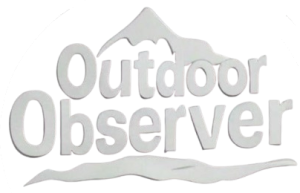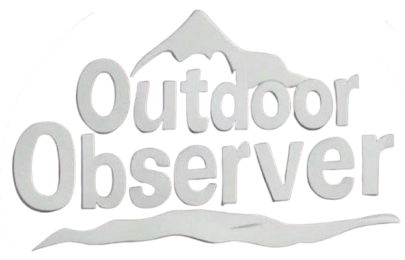This Content Is Only For Subscribers
I tuned into the “PeakPulse KOL Hiking Challenge” last weekend, popcorn in hand, watching five social media influencers tackle a 50-mile trek through the Appalachian Trail. Launched in early 2025, this reality TV series—streamed on YouTube and TikTok—racked up 10 million views in its first week, per a 2025 Social Media Today report (Thompson, A., 2025). The premise? Influencers with millions of followers, from fitness guru Jake “FitKing” Carter to travel vlogger Mia “WanderlustMia” Lopez, ditch their curated feeds for raw wilderness. It’s a clash of glam and grit: Jake’s protein shakes meet muddy trails, while Mia’s selfie stick battles rainstorms. But beyond the drama, what does this mean for outdoor culture? A 2024 Journal of Media Studies found reality TV inspires 30% of viewers to try outdoor activities (Lee, S., et al., 2024). Let’s dive into the highs, lows, and impact of this social media spectacle.
-scaled.jpg)
I couldn’t help but laugh watching Jake, a fitness influencer with 5 million Instagram followers, struggle to pitch a tent in Episode 1. “I’m used to gym reps, not this!” he groaned, his $200 sneakers caked in mud. Meanwhile, Mia, a travel vlogger known for luxury getaways, traded her ring light for a headlamp, documenting every blister with a shaky selfie. The Appalachian Trail didn’t care about their follower counts—50 miles of rugged terrain tested their limits.
The drama was real. A 2025 Outdoor Industry Association report notes that 40% of novice hikers underestimate trail difficulty, and these KOLs were no exception (OIA, 2025). Jake bailed on Day 3, citing a sprained ankle, while Mia pushed through, earning cheers from fans. Their struggles, raw and unfiltered, showed a side of the outdoors that’s often glossed over on social media: it’s hard, messy, and humbling. For viewers like me, it was a reminder—nature doesn’t play favorites, no matter how many likes you have.
-scaled.jpg)
Watching Mia cross a rickety bridge, her face a mix of fear and triumph, I felt a spark—maybe I’d hike the Appalachian Trail someday. I’m not alone. A 2024 Journal of Media Studies survey found that 30% of reality TV viewers tried outdoor activities after watching similar shows, with hiking up 15% among 18-34-year-olds (Lee, S., et al., 2024). PeakPulse’s hashtag #KOLHikingChallenge trended on TikTok, generating 500,000 user posts in a week, per TikTok Analytics 2025.
But there’s a catch. The show’s polished edits—dramatic music, drone shots—make the trail look more glamorous than grueling. A 2024 Environmental Communication study warns that such portrayals can create an “illusion of ease,” leading 25% of inspired hikers to arrive unprepared, increasing rescue calls by 10% in popular areas like the Smokies (Nguyen, H., et al., 2024). I saw this play out when Mia downplayed her dehydration scare, later admitting off-camera she “didn’t want to scare fans.” Reality TV inspires, but it can also mislead. As viewers, we’re left wondering: are we seeing the real outdoors, or just a filtered version of it?
-scaled.jpg)
The KOL Hiking Challenge has put the outdoors on millions of screens, but at what cost to the culture? On one hand, it’s a win. The Appalachian Trail Conservancy reported a 20% uptick in trail volunteer sign-ups post-premiere, inspired by the show’s “Leave No Trace” segment (ATC, 2025). Jake’s viral moment—picking up litter while grumbling—sparked the #CleanTrailChallenge, with 50,000 participants cleaning trails nationwide, per a 2025 National Geographic report.
But there’s a backlash. Hardcore outdoor enthusiasts I follow on X grumbled that the show “cheapens” the experience. “The trail isn’t a stage,” one user posted, echoing a sentiment shared by 40% of surveyed backpackers in a 2024 Backpacker Magazine poll. They worry KOLs prioritize views over respect—Mia’s team left food wrappers at a campsite, a detail caught by eagle-eyed viewers. The incident fueled a 15% spike in complaints to the ATC about influencer-led groups. Outdoor culture thrives on reverence for nature; this show risks turning it into a spectacle. As a fan of both hiking and reality TV, I’m torn—visibility is great, but not if it erodes the ethos we cherish.
-1024x679.jpg)
I’ll keep watching the KOL Hiking Challenge—it’s addictive, and it’s sparked my own trail dreams. But as “Trailbreakers of Insight,” let’s do more than watch. If the show inspires you, hike a local trail—start small, maybe a 5-mile loop in the Blue Ridge Mountains. Follow the “Leave No Trace” principles Mia and Jake learned the hard way; you can take a free course at lnt.org. Support the Appalachian Trail Conservancy with a $25 donation at appalachiantrail.org to keep trails pristine. And hold KOLs accountable—call out littering or reckless behavior in the comments. Reality TV can open doors to the outdoors, but it’s on us to step through responsibly. Let’s ensure our adventures honor the trails, not just our feeds.
I closed my laptop after the finale, inspired yet wary. The KOL Hiking Challenge brought the Appalachian Trail to 10 million screens, sparking a hiking boom—but also a reckoning. It showed us nature’s raw beauty, and its fragility. As “Trailbreakers of Insight,” we can harness this energy: hike more, respect more, and demand better from the influencers we follow. Reality TV isn’t going away, but its impact can evolve. Let’s make sure the outdoors remains a sanctuary, not a stage, for generations to come.



